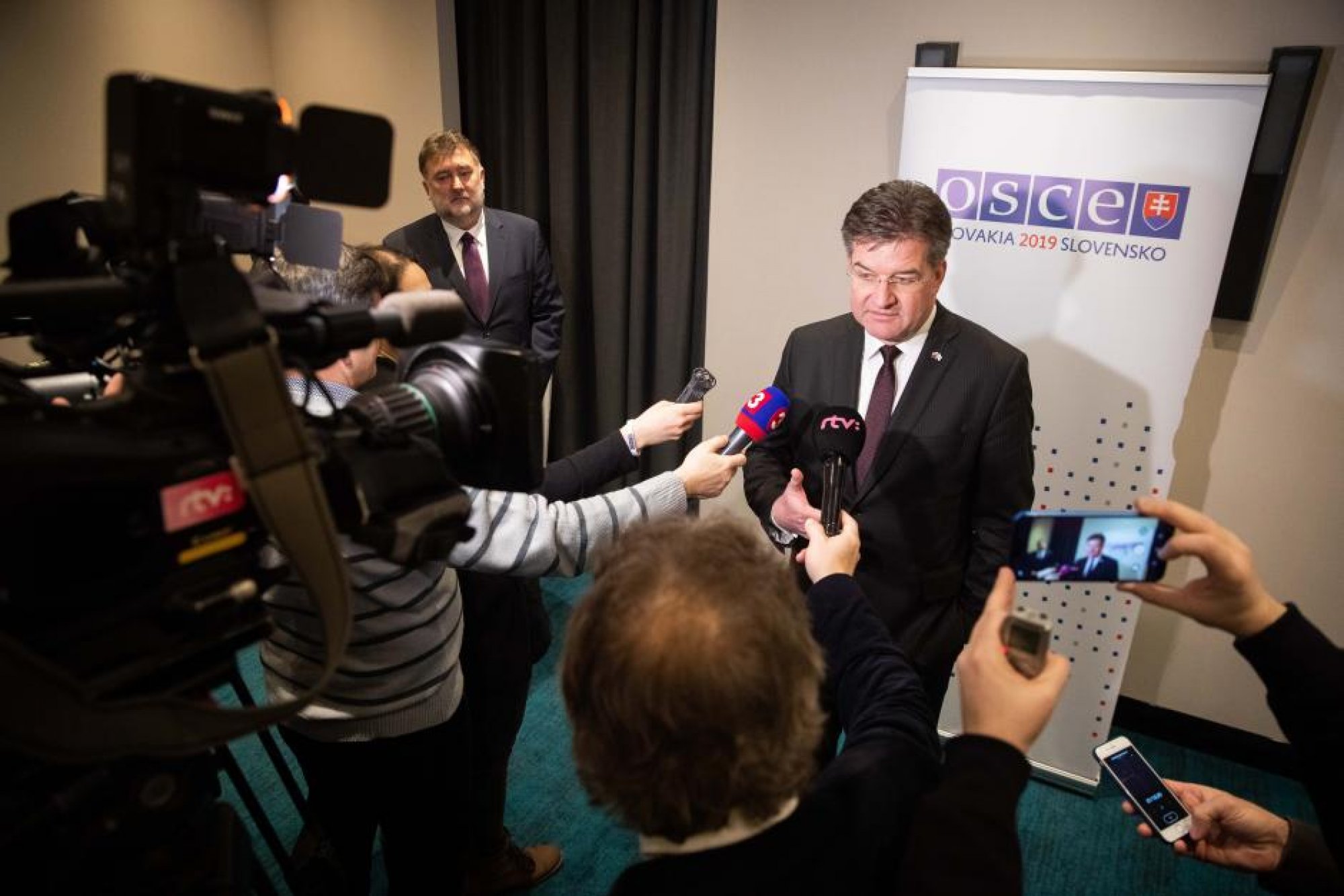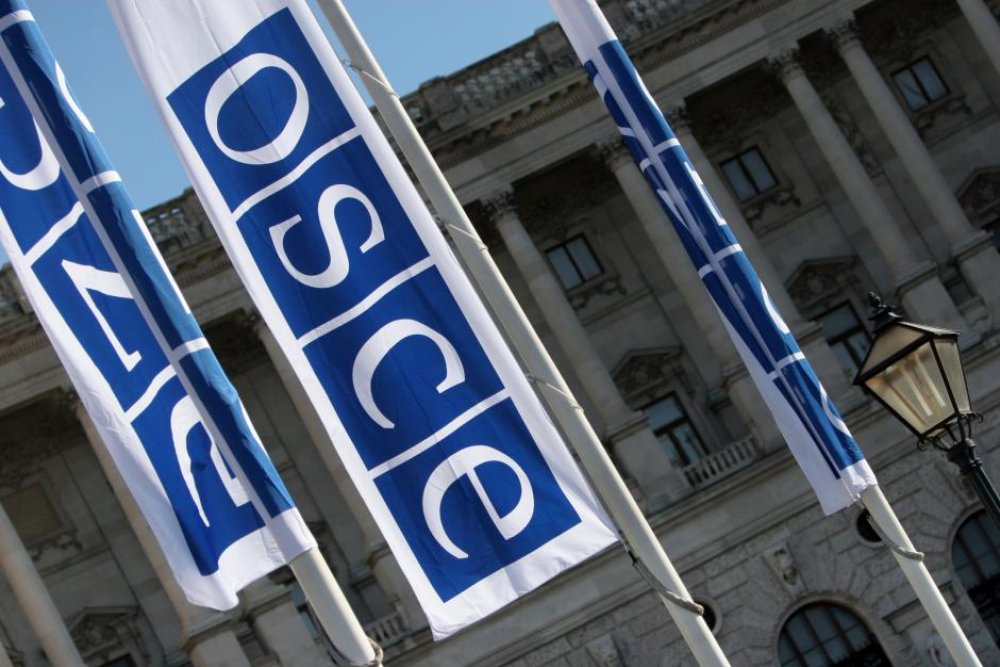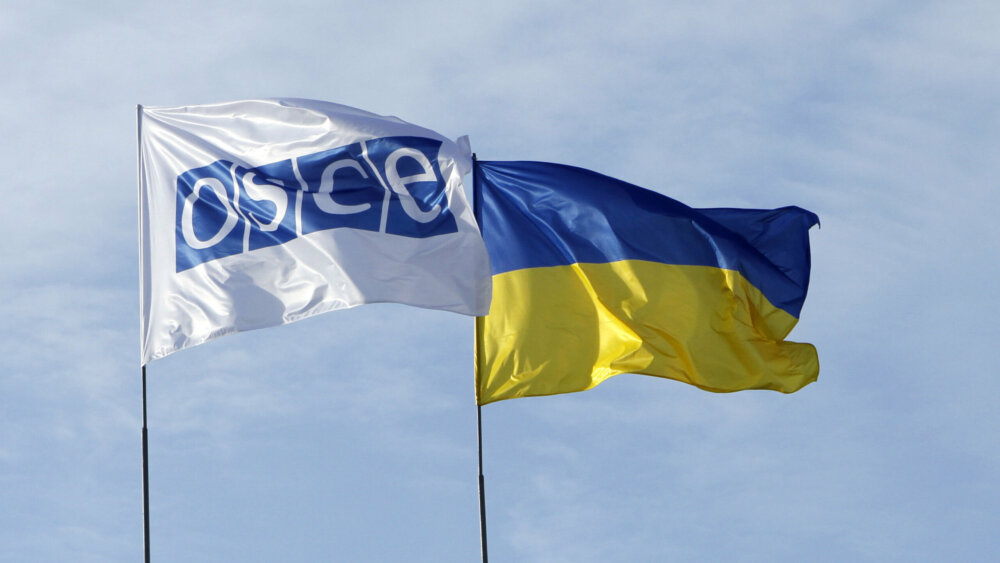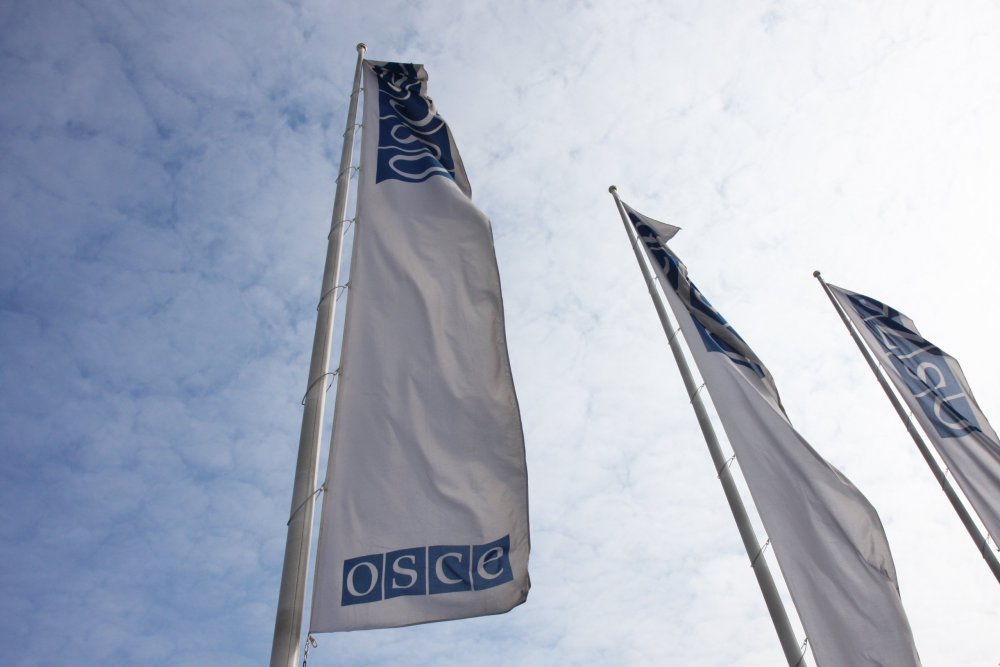OSCE/Tomas Bokor

Slovakia’s OSCE Chairmanship: Amid Dire Straits for Multilateralism*
The first nine months of Slovakia’s OSCE Chairmanship have been dominated by time-consuming negotiations on administrative and procedural issues, made more difficult by an overall political climate of zero-sum thinking. Despite this, progress was made on the ground in eastern Ukraine, and the visibility of the OSCE on the international stage was significantly enhanced.
“It is the first time we are starting a Chairmanship in times of dire straits for multilateralism […],” said Slovakia’s Foreign Minister Miroslav Lajčák in his first address to the OSCE Permanent Council in Vienna in January, when he officially launched the Slovak OSCE Chairmanship.
And he added: “The major challenges facing the OSCE region today – and, indeed, the wider world – demand more cooperation and more dialogue than ever before. Yet, as the demand for multilateralism rises, we are seeing it come under increasing threat.”
This assessment is shared by many experts who observe states turning increasingly inward, away from multilateral and cooperative solutions towards a more competitive agenda. This competition largely follows a realist doctrine focused on advancing narrow national interests.
Decline in multilateralism leads to deadlock
This current trend in international politics towards ‘my country first’ and the overall decrease in promoting multilateralism and cooperative solutions greatly impacts the work of the OSCE, an organization based on consensus and dialogue.
It has become increasingly difficult to reach consensus in the OSCE, even on minor, procedural issues, such as conference agendas. States distrust one another, are less willing to compromise, and tend to link unrelated issues to one another, thus creating deadlock and paralysis. The current political environment proves to be a toxic mix for an organization where virtually every decision has to be adopted by consensus of the 57 participating states.
Administrative issues dominate the agenda
Since it is the primary task of the Chairmanship to build consensus, it is precisely this dynamic that has made the first nine months of the Slovak OSCE Chairmanship so difficult.
In this charged environment, routine administrative issues have become very energy- and time-consuming, especially when negotiating consensus on the annual OSCE budget, the agenda of the Human Dimension Implementation Meeting, and the extension of the mandate of the Special Monitoring Mission to Ukraine. All these seemingly administrative decisions are now marred by an overall political climate of zero-sum thinking.
Despite this, Slovakia managed to negotiate the necessary consensus on all three above-mentioned decisions, just in time before negative effects would have crippled the work of the Organization.
Yet, given the strained atmosphere and the months needed to reach consensus on common agenda items, little time remained for implementing additional major initiatives by the Chairmanship.
For example, an attempt was made by the Slovak Chairmanship to add the topic of Security Sector Governance and Reform (SSGR) and its role in preventing conflict to the OSCE agenda. For this purpose, Slovakia held three thematic conferences during the past nine months, but more concrete action is still missing. In order to make a real difference in the OSCE context, the Slovak Chairmanship will have to take action to negotiate a decision with concrete measures on SSGR, to be adopted at the December Ministerial Council in Bratislava.
The Slovak Chairmanship also tried hard to overcome some of the negative dynamics among states by creating a more positive spirit and convening an informal OSCE Ministerial gathering in a remote location in the Slovak High Tatras mountains on 8 and 9 July. The idea was to bring together ministers from the 57 OSCE participating states in an informal atmosphere and to discuss the OSCE’s role in securing peace.
While the meeting was attended by 23 foreign ministers, 11 state secretaries and almost 300 delegates, foreign ministers from key OSCE states were missing, including from Germany, France, Great Britain, and also the US. According to several diplomats, who wish to remain anonymous, this was a missed opportunity, particularly in the current climate where it would have been necessary for the participating states to show ownership of and commitment to key OSCE agenda topics.
Visibility of the OSCE enhanced
That said, the Slovak OSCE Chairmanship invested a great deal of time and resources in enhancing the visibility of the OSCE on the international stage. In the course of this year, OSCE Chairperson-in-Office (CiO) and Slovak Foreign Minister Lajčák traveled to all OSCE field operations, including in the Balkans, in eastern Europe, the South Caucasus and Central Asia.
Lajčák also made great efforts to provide political impetus to established negotiation formats on the protracted conflicts in the OSCE area. He took three trips to Ukraine, and traveled to Moldova and Georgia. He also provided political support to the solution of the Nagorno-Karabakh conflict by hosting the so-called Minsk Group Co-Chairs (representatives from France, the Russian Federation and the US) in Bratislava. Furthermore, negotiators of the so-called 5+2 format that deals with the conflict between Moldova and its breakaway region of Transdniestria, will meet in Bratislava on 8 and 10 October.
Lajčák thus stepped in after a two-year period during which CiOs were challenged by their own domestic political contexts, particularly elections in Austria (2017) and Italy (2018), preventing them from providing the political leadership that the OSCE needed.
The past nine months of the Slovak Chairmanship also proved that even small states can make an important and effective contribution to peace and security, provided there is willingness to invest the necessary political, financial and human resources.
Progress in eastern Ukraine
Lajčák’s political leadership also translated into positive developments on the ground in eastern Ukraine. While the armed conflict remains unresolved in its fifth year and has led to the killing of 13,000 people, a more positive dynamic has emerged in the course of recent months.
Foreign Minister Lajčák used his three trips to Ukraine to familiarize himself with the humanitarian situation along the contact line, and held many high-level consultations, including with recently elected Ukrainian President Volodymyr Zelensky.
According to sources familiar with the discussions, Foreign Minister Lajčák encouraged prisoner exchange and military disengagement of forces. In his consultations, Lajčák also raised the need to hold a Normandy Summit (consisting of France, Germany, the Russian Federation and Ukraine) soon, with the last one dating back to October 2016.
Apart from that, the election of Volodymyr Zelenskiy as President of Ukraine this year, and the victory of his ‘Servant of the People’ Party in parliament, had a positive impact on the dynamics within the Trilateral Contact Group and led to successful disengagement of military forces around the area of the Stanytsia Luhanska bridge. Necessary bridge repair has begun, along with dismantling of fortifications and demining activities, all vital for the almost 11,000 civilians who use the bridge every day.
Furthermore, on 17 July the Trilateral Contact Group issued a statement in which the parties reaffirmed their “full commitment to a comprehensive, sustainable and unlimited ceasefire”. Although infringements to the ceasefire have occurred, the overall number of violations has gone down and has led to a significant decrease in civilian casualties.
The positive dynamic was continued when on 7 September a prisoner exchange took place, where Russia and Ukraine each released 35 prisoners, among them the sailors who were captured by Russia after the incident in the Kerch Strait. Two days before the prisoner exchange, a Ukrainian court also released Volodymyr Tsemakh, a key witness in the case of the 2014 downing of Malaysia Airlines Flight MH 17.
Despite the recent positive developments, the implementation of the Minsk Agreements remains stalled and the negotiation track between US Special Representative Kurt Volker and his Russian counterpart Vladislav Surkov seems to have run dry for the time being.
Furthermore, a replacement for Ambassador Martin Sajdik, Special Representative of the OSCE CiO in Ukraine and in the Trilateral Contact Group, remains to be found, with sources naming Austrian career diplomat Thomas Mayr-Harting as one possible candidate.
Controversies that need to be solved
The remaining three months of the Slovak OSCE Chairmanship will have to be used to solve a number of outstanding issues and controversies, and to negotiate a balanced package of decisions to be adopted at the forthcoming OSCE Ministerial Council meeting, to be held in Bratislava on 5 and 6 December.
While some of the topics seem purely administrative in nature, they do have the potential of weakening the overall political work of the OSCE, if not addressed effectively.
For example, discussions on the so-called Scales of Contribution (the share of the OSCE budget covered by each participating State) have been marred by the inability of states to compromise, and to look at the bigger picture of providing the OSCE with adequate funding. If this problem is not solved soon, vital OSCE programs and activities could be at stake in the future.
Another main outstanding issue (that first went viral in 2017) is the controversy surrounding the participation of NGOs at OSCE human rights conferences. To date, participating states remain divided over the set of criteria that NGOs have to meet as a precondition for their participation in OSCE events.
Turkey (and a few other states) have criticized this situation for several years, believing that the OSCE thus offers “a platform to the extension[s] of terrorist organizations”. Similar to previous Chairmanships, Slovakia designated an Informal Working Group to negotiate a solution behind closed doors. A breakthrough on this topic is needed in order to uphold the OSCE’s important work on the human dimension.
In addition, the so-called Structured Dialogue, first launched in 2017, has so far failed to produce any concrete results. Yet, it remains the only effective multilateral forum for addressing security issues between Russia and the West on both a diplomatic and military level.
This year’s focus of the group is to work on risk reduction measures, incident prevention and incident management, which is seen as a crucial way to avoid accidental warfare. In order not to lose credibility, efforts should be made to negotiate and adopt a decision with concrete action at the Bratislava Ministerial Council in December.
Leadership crisis ahead?
Finally, the Slovak OSCE Chairmanship will have to invest considerable diplomatic efforts to bring on board candidates for the OSCE Chairmanships in 2021 and 2022 – a task that so far no state seems too keen to assume. In order to avert a political leadership crisis, formal decisions will have to be adopted at the OSCE Ministerial Council in Bratislava on 5 and 6 December.
What the OSCE needs most right now are participating States that are willing to assume international responsibility. The organization needs all states to “recommit to multilateralism”, as Lajčák told OSCE Ambassadors at the beginning of the year “We cannot, achieve [this] from impassioned speeches or statements alone. It must, instead, come through action.”
*This article is partially based on analysis that will be presented in a Conference Framing Paper at the OSCE Focus Conference in Geneva in October 2019.



Comments
* Your email address will not be published